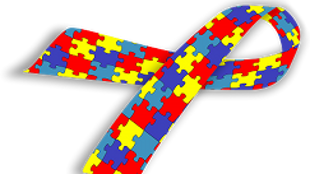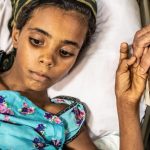
A genome-wide analysis of the RNA in the brains of individuals with autism reveals consistent patterns of abnormal gene expression and implicates several molecular pathways in the pathology of autism.
The research, published today in Nature, suggests that shared molecular pathways underlie autism, a notoriously heterogeneous disease, which may point the way to biomarkers and therapeutic targets for the disease.
“Here, using an unbiased genome-wide scanning method looking at the RNA rather than the DNA, we clearly identify these two major processes going on that are common to a majority of autism brains,” said senior author Daniel Geschwind of the University of California, Los Angeles.
“This is really well done study, with appropriate sample sizes and well thought through,” said Karoly Mirnics, a neuroscientist at Vanderbilt University who was not involved in the research. “We need more of these kinds of rigorous studies.”
Instead of comparing DNA sequences of people with autism against normal controls, as done in many genome-wide association studies, Geschwind and colleagues decided to look at the mRNA, or transcriptome, of individuals with autism to identify any abnormalities in gene expression.
They compared brain tissue samples from 19 autism patients with 17 controls and measured the abundance of mRNA in the cerebellum and cerebral cortex. In total, 444 genes were differentially expression in the autism cortex samples. And there was a surprising pattern: In normal brains, gene expression in frontal lobe varies significantly from that in the temporal lobe due to the different functions of the two regions of the brain. But in autism brains, the levels of gene expression between the two lobes were homogenized, as if the two regions did not have disparate functions.
“The paper implies that the different brain regions in autism are not specialized as they should be,” said Mirnics, who wrote an accompanying News & Views article in Nature. “It very well might be the result of impaired development.” This pattern of abnormal gene expression was shared by more than two-thirds of the autism patients, suggesting that the altered molecular pathways are common in brains with autism, an important and debated point in autism research. Because autism cases vary widely in terms of phenotype and only a few genes have been implicated across the whole spectrum of autism disorders, researchers have suspected that there are no common causes of the disease, making it extremely hard to develop widely applicable autism therapies.
“If you have 100 cases of autism, we used to think there were 110 mutations,” said Geschwind. “This is now telling us there are common patterns.”
To further explore the differences, the team focused on two networks where altered gene expression of one or a few genes appeared to be driving the abnormal expression of a group of interacting genes. One of these was A2BP1, a master gene splicer. The team found that A2BP1 was downregulated in brains with autism, and resulted in the abnormal splicing of genes involved in synaptic function. A second network included multiple astrocyte markers, ADFP and IFITM2, whose upregulated expression affected immune and inflammatory genes.
Using a technique called network analysis to organize the data, the team compared their findings to genome-wide association studies of non-psychiatric disease, and concluded that the A2BP1 network of affected genes is genetically associated with autism and could even be causal, while the over expression of immune genes was not. Together, the two processes show a high degree of correlation, but “the immune response is probably secondary” to synaptic dysfunction or caused by environmental factors, said Geschwind.
It will take time to understand how these molecular pathways are connected, but the identification of common, abnormally expressed molecular pathways in this heterogeneous disease provides hope that common treatments can be developed for individuals all along the autism spectrum. “It provides a springboard for focused studies that should get us more quickly to therapies,” said Geschwind.











RSS